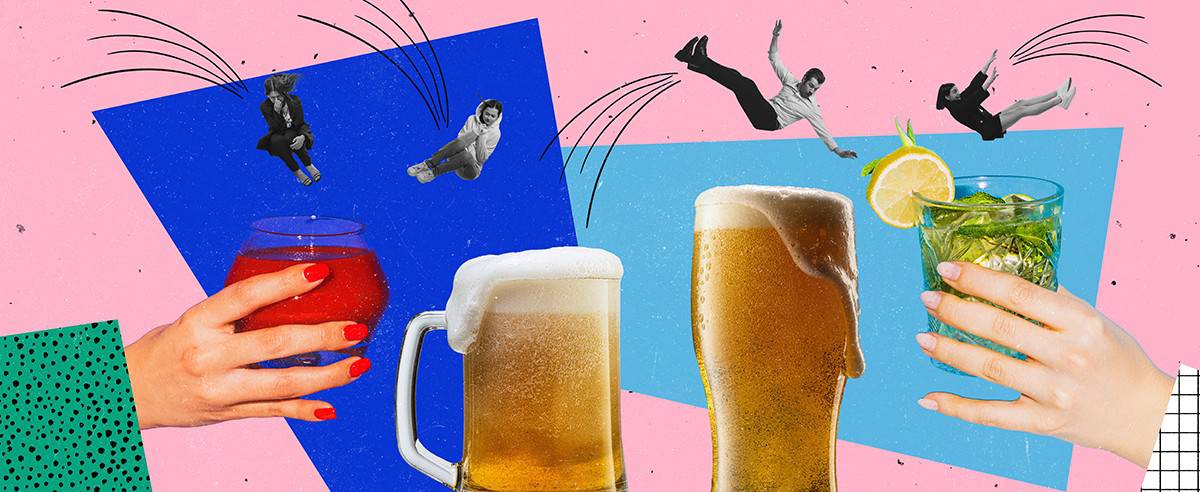Why are French youth still seeing so many alcohol ads, despite strict laws? Passed in 1991, the Évin Law was supposed to shield young people from alcohol marketing, banning ads from TV, youth media, and any attempt to make drinking look glamorous. Yet, recent studies reveal that youth in France are still exposed to a flood of alcohol ads—not just on traditional media but increasingly on digital and social platforms, where the law struggles to keep up. This persistent reach into youth spaces raises serious questions: are today’s regulations enough? And if not, what needs to change?
Guillemette Quatremère, Addictions Research Officer, and Viêt Nguyen-Thanh, Head of the Addictions Unit at Santé publique France, the national public health agency, argue it’s time to rethink the regulation of alcohol beverage advertising in France, both on traditional media and in digital marketing that’s more powerful and pervasive than ever.
The commercial determinants of health, such as the commercial practices of the alcohol sector, heavily influence alcohol consumption. It’s now well established in the scientific literature that alcohol marketing, including advertising, has a significant impact on drinking attitudes and drinking behaviours, specifically among young people and at-risk drinkers.
In 1991, France took a pioneering step by enacting the Évin Law which regulates alcohol advertising. Designed to protect youth from exposure, the law prohibits alcohol advertising on TV and in youth-oriented media and limits content that associates alcohol with positive imagery, such as parties or glamour.
However, despite this law, according to several recent studies, young people and at-risk drinkers in France remain exposed to a significant volume of alcohol advertisements. This includes traditional media such as radio, billboards, and print, as well as online via the internet and social media.
Santé publique France, the French public health agency dedicated to scientific expertise and the prevention of unhealthy behaviors, conducted a study in 2021 to understand this phenomenon.
The gross amount of advertising investments for alcoholic beverages was assessed across radio, press, and outdoor advertising. Internet display advertising (banners, site backgrounds, pop-ups, etc., tracked across approximately 700 websites in 2020) was also included in measurements from 2018 to 2020. These measurements were carried out by Kantar Media, an agency specialised in monitoring advertising placements. The method involved identifying aired ads and assigning them a monetary value based on rates listed in the pricing schedules of the advertising agencies that manage ad space sales.
Big investments in alcohol advertising
Estimated alcohol advertising expenditures by the alcohol industry in recent years have been substantial, with more than €300 million each year, representing over two-thirds of the advertising investments in the beverage sector. This study, based on a relatively consistent media focus over the years, investigated the decline in alcohol advertising investments, which dropped from €454.5 million to €318.4 million between 2016 and 2019. The reason for this decline? Well, it might be due to a shift of advertising investments from traditional media outlets to social media platforms, which in all areas have seen an increase in investment but are underestimated in the current study.
Beer and wine were the beverages for which the largest amounts were invested. Investments were significantly seasonal, with two annual peaks in early summer and December. Specific events (notably sports events) can also lead to substantial advertising investments. In 2016, a peak was observed during the European Football Championship held in France.
Youths are still seeing ads. Is the Évin Law enough?
Dentsu Aegis International, a major global media and digital marketing agency, measured the population’s exposure to these alcohol advertisements broadcasted on radio and in the press. Their measurement cross-referenced advertising broadcast data (i.e., broadcast time slots) with audience data for individuals aged 13 and above in mainland France. Exposure to these advertisements is estimated as an average number of contacts per individual per year, representing the number of ads seen or heard, on average, by everyone over the course of a year.
Despite the restrictions imposed by the Évin Law, young people’s exposure to alcohol ads remains concerning. Radio exposure among youth aged 13 to 17 increased yearly, rising from 41 contacts per year in 2018 to 46 in 2020. On average, individuals under 18 encountered approximately one ad every three days via radio and press alone—a high frequency that excludes digital and social media campaigns as well as outdoor ads, which represent one-third of the investments.
The hidden influence of non-alcoholic beverages
Another alarming aspect concerns advertising for non-alcoholic versions of alcoholic beverages. These ads are allowed on television, and their packaging and visuals are often very similar to those of alcoholic versions. Although these beverages contain no or a very low amount of alcohol, they can reinforce brand familiarity and may potentially ease the transition to alcoholic versions.
The need to better regulate alcohol advertising
Over the period 2018-2020, the alcohol industry invested between €24 and €55 million each year in advertising of non-alcoholic beverages: a smaller amount in comparison with alcoholic versions, but a significant amount that contributes significantly to young people’s exposure. For instance, in 2018, youth aged 13 to 17 were exposed to an average of 17 of these ads on radio, while youth aged 15 to 24 had an average of 23 contacts on TV.
Santé publique France’s study underestimates alcohol advertising investments and the exposure of the French population. Indeed, advertising and pro-alcohol messages on social networks, sponsorship in movies or TV shows, and other kinds of marketing operations are not included in these estimates. However, despite their shortcomings, they manage to put a number to the massive advertising investments made by alcohol companies and the high exposure of the population to these ads, particularly young people, regardless of regulation under the Évin Law.
These results argue in favour of better regulating, limiting, or even banning alcohol beverage advertising in France, as has already been done in some European countries.



